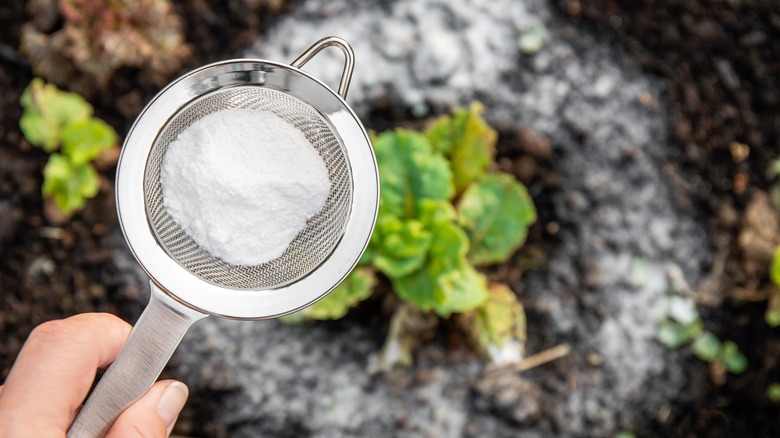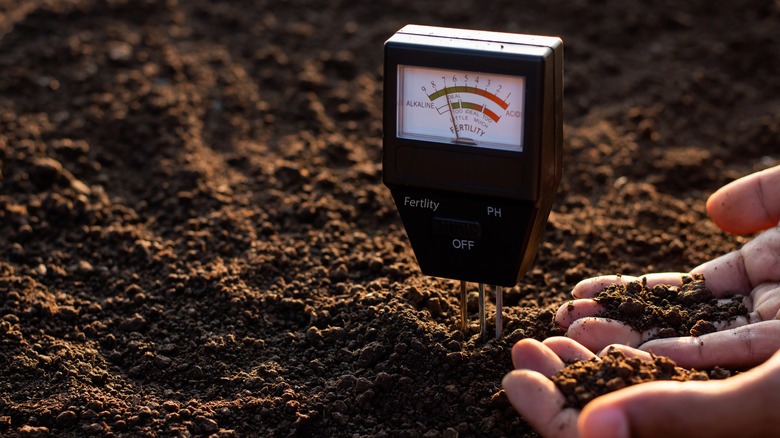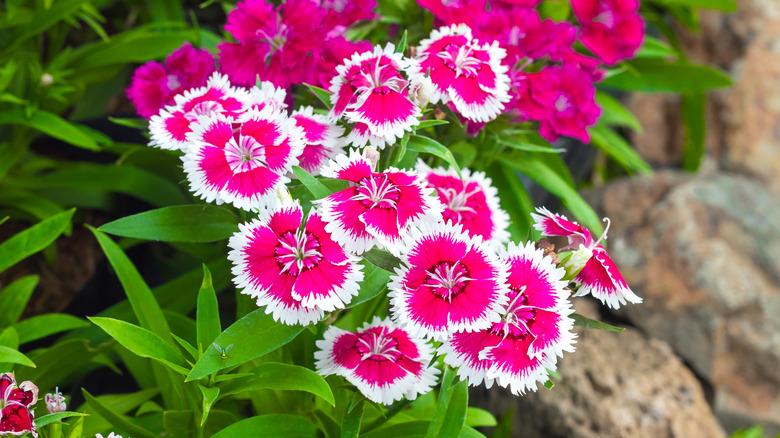A Dash Of Baking Soda Can Help This Cottage Garden Favorite Bloom
Ornamental flower gardens are no doubt one of the best ways to introduce your home. Before people even step through your door they get a fresh burst of aromas and sweet scents first. The flower group that's bound to get you that priceless reaction is the Dianthus genus. These flowers come in colors ranging from white to red to pink and even come in mixed varieties. It can be heartbreaking to work so hard under the elements trying to make sure you get the bloom you've been dreaming of, only for the flowers to fall short at the end of the day. One remedy you can turn to that can help this cottage garden favorite bloom gorgeously is baking soda, an alkali. Although this is an unexpected way to use baking soda at home, dianthus flowers love alkaline soil and you only have to add a dash of it.
Growing dianthus flowers is easy because they are extremely hardy, low-maintenance plants. You can get away with not following their requirements list to the letter, but that means you won't get the results you want. Dianthus flowers typically prefer growing in soil that is neutral to alkaline and this is the environment they need to produce those gorgeous, brilliant pink and red blooms. If your yard soil tends towards being more acidic, then it wouldn't be doing your dianthus flowers justice. Fortunately, they are one of many garden flowers that can benefit from a baking soda application to the soil.
Test your soil pH to determine its acidity level
Every plant has its own special needs. Alkaline soil happens to provide a higher range of minerals such as sodium, molybdenum, and calcium which contribute to the growth and development that the plant needs. It also boosts their immunity against diseases. Too acidic soil can affect the availability levels of these crucial nutrients and even put the habitat of beneficial soil microbes and earthworms at risk. If your dianthus flowers aren't performing as well as you want them to and you suspect the soil acidity is at fault, you can purchase a soil test kit and check it yourself before going in with the baking soda.
Once you've confirmed that your soil acidity is on the high side and could do with some balancing, you can head to your kitchen and grab the baking soda from your cabinet. The ideal time to start applying the baking soda is before you even get started planting the dianthus flowers. Mix 1 tablespoon of baking soda into a gallon of water. Applying baking soda this way makes for easier distribution than if you used it in its solid state. Use a sprinkler or pail to apply the solution evenly over the soil. Repeat this every few months if you need to.
Too much baking soda for dianthus is never a good thing
Sprinkling a baking soda solution onto your soil in order to give your dianthus flowers a better bloom may be a great way to raise the acidic pH using natural and non-toxic means. However, baking soda is still a chemical and you should be wary of how much you add to the soil and how frequently as well. Too sharp a change could affect the internal balance of the soil and the creatures that live in it. Not to mention, it could affect your dianthus plants as well. Balance is key. Once you have applied the baking soda, check the soil pH after a month or so to make sure it's at an optimal level.
You can apply the baking soda even after your dianthus plants are planted and growing but make sure not to sprinkle it directly over the flowers. While baking soda does have a fungicidal effect on plants which is great, it also contains a hefty amount of sodium which isn't good for your flowers. You want the soil pH to change gradually and organically, not all in one day. Once the pH is raised and your dianthus is able to have access to all the nutrients that it needs, you will start to see a positive change in the way it blooms.


